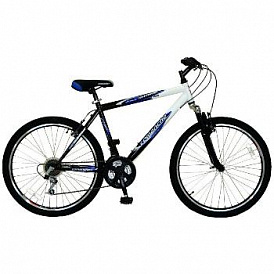How to choose a helmet for snowboarding
During the descent, the snowboard is capable of high speed, and very often equipment is the only thing that can save the rider from injury in the fall. This is especially true of a helmet that protects the head from hitting hard objects. The case of Michael Schumacher, who hit his head on a stone while skiing, is fresh in his memory, and for this reason, the choice of a quality and reliable helmet should be paid close attention.
content

Choosing a helmet for snowboarding. Top manufacturers
Preference should be given to the products of those manufacturers who are responsible for the creation and conduct a lot of stress tests of finished samples:
-
Sun helmet
-
R.E.D.
-
Alpina
-
Arnette
-
Cebe
-
Dainese
The products of the above manufacturers are in great demand among professional snowboarders and fully comply with the requirements of functionality and safety. There is no doubt that such equipment will not only be stylish, but also will not fail at the most crucial moment.
Snowboard Helmet Options

Virtually any snowboarding helmet is a multi-layered structure consisting of three main elements:
-
The outer layer is protective, it is he who is responsible for ensuring safety in case of a fall. It is made of plastic or polycarbonate, may have additional reinforcement with special meshes;
-
The intermediate layer is made of soft material - PVC, foam, EPS, EVA. This material takes the form of a rider's head and provides a tight fit while riding;
-
The inner layer, which is in direct contact with the head, is made of a soft material that provides maximum convenience and comfort during pokatushek.
One and all helmets for snowboards can be divided into two conditional groups:
-
Open helmets. Lightweight and compact models that protect only the upper part of the head. Easy to use and relatively inexpensive. Among the shortcomings there is a low degree of protection of the face and jaw in the fall and contact with hard objects;
-
Closed helmets (full-face models), the design of which resembles motorcycle equipment. Perfectly protects the head from injury, but deliver a certain discomfort when riding - affect the overall size and weight.
In pursuit of maximum security should not be neglected issues of convenience, comfort and aesthetics. Pay attention to the following functional features:
-
Design features of the ventilation system. All snowboard helmets are equipped with two types of ventilation systems. The first is active ventilation, consisting of a list of dampers and special air ducts that can be adjusted manually. The second is passive ventilation, the design of which is devoid of adjustment;
-
The weight of the helmet for snowboarding. Traditionally, the heavier the helmet, the more secure it is.However, this statement is not quite right - there are a large number of helmets made from modern materials (for example, carbon), characterized by maximum strength and relatively low weight. For convenient operation, the weight of the helmet should not exceed 800-1000 grams;
-
The presence or absence of the visor and its design. Visor is an important aerodynamic element, and also contributes to reliable fixation of the mask during active driving. The negative point of the aerodynamic visor can be the inconvenience that it creates during riding on short sections of the route, when the mask has to be put on and taken off very often.
How to choose the size of the helmet for snowboarding

In addition to the above parameters, close attention should be paid to the size of the snowboard helmet. In order for a beginner to decide and really make sure that the helmet fits in the most optimal way, it is necessary to do the following before fitting:
Measure the circumference of the head with a string or “meter”;
To compare the obtained figures with the generally accepted classification of helmets, presented in the form of numbers. There are nine helmet sizes, starting with the smallest 4XS (4 extra small), designed for riders with a head circumference of 46-48 centimeters, and ending with 2XL models designed for “giants”, whose head in a circle can be 63-65 centimeters. Between them are the following parameters:
-
3XS (head size 48-50 centimeters);
-
2XS (head size 50-52 centimeters);
-
XS (head size 52-54 centimeters);
-
S (head size 54-56 centimeters);
-
M (head size 56-58 centimeters);
-
L (head size 58-60 centimeters);
-
XL (head size 60-62 centimeters);
-
2XL (head size 62-64 centimeters);
If the parameters you measure fit in two categories at the same time (for example, a circle of 56 centimeters in length falls under the dimensions S and M), you need to try on each model and give preference to the one that will sit better and not deliver discomfort.
In the following articles, our experts tell how to choose a snowboard masksecrets choice of universal snowboard and recommendations for choosing a snowboard cover.
Attention! This material is the subjective opinion of the authors of the project and is not a guide to purchase.













